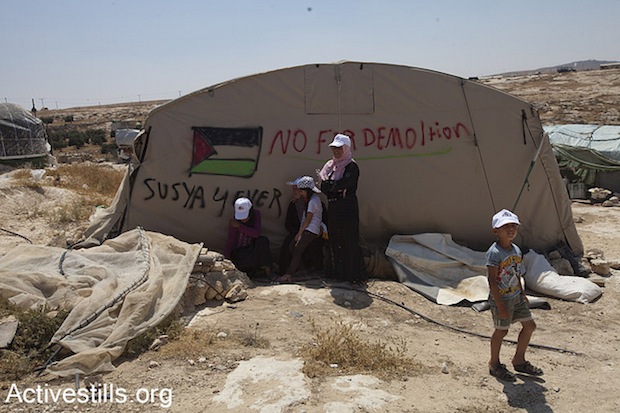Tag: Susya
-
Israeli State threatening immediate demolition of entire Palestinian village
5th May 2015 | Operation Dove | At-Tuwani, Occupied Palestine This article was originally published as a press release by Operation Dove. The entire Palestinian village of Susya is in danger of demolition and expulsion. By refusing to issue an interim order preventing preemptive demolitions before their case is heard, the Israeli High Court is…

